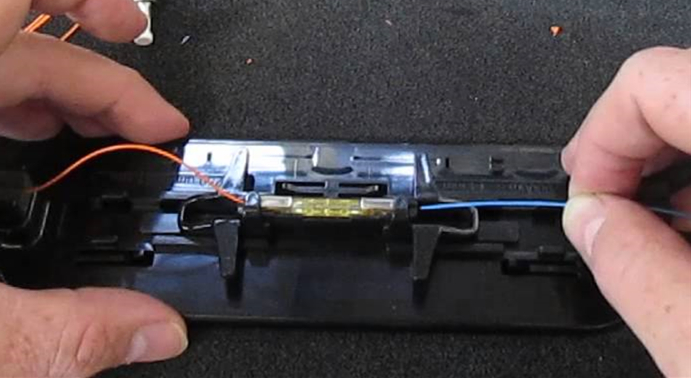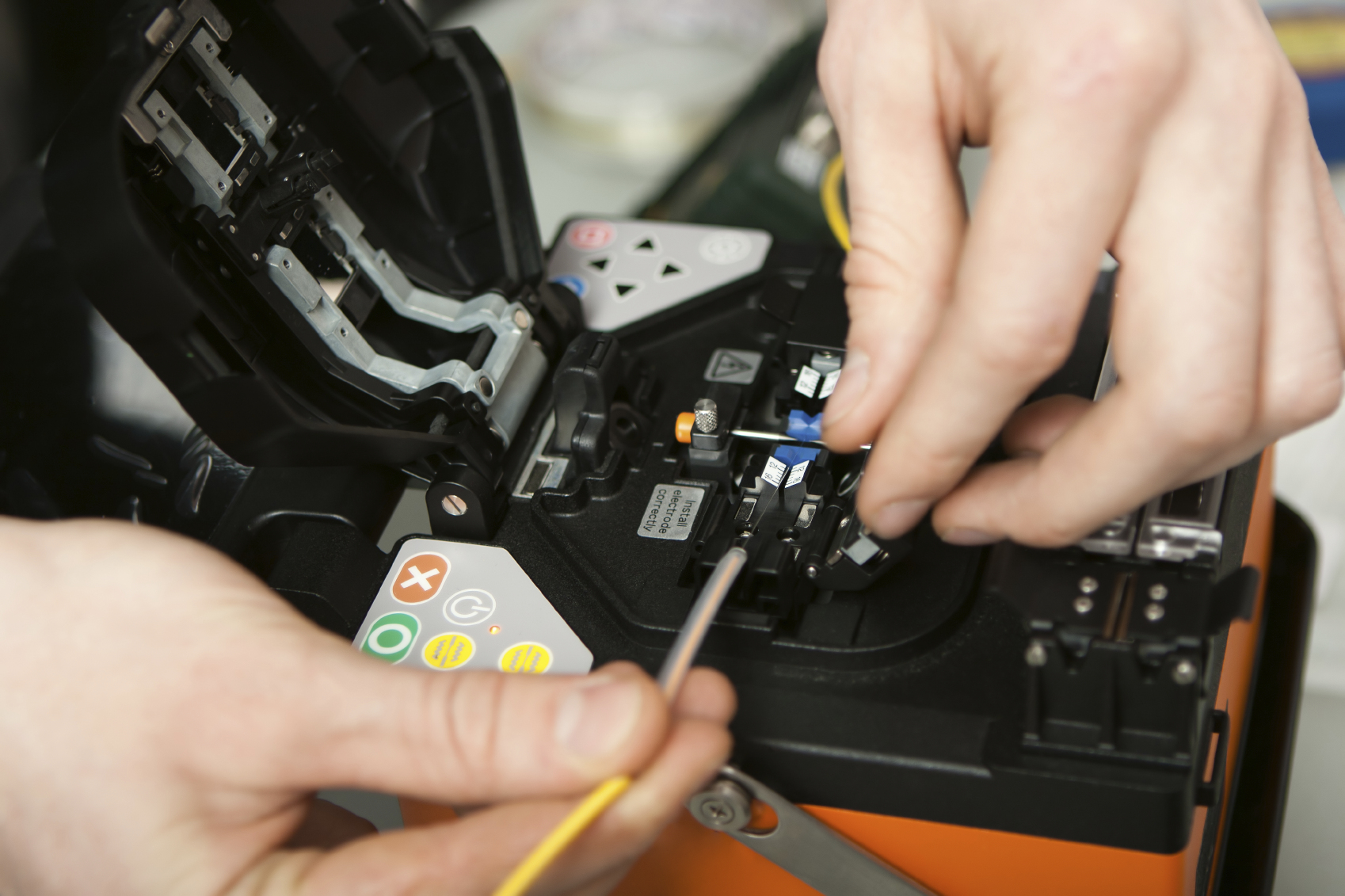What Is Mechanical Splicing?
Mechanical splicing is using the alignment devices to hold two fiber ends in a precisely aligned position. This enables the light to pass freely through one fiber to another fiber. In this method, the joint is not permanent. Two fibers can still be split after the signal transmission. Mechanical splicing has a low initial investment but costs more for each splice.
Fusion splicing is using the professional machine to joint two optical fibers ends together. The splicing machine will hold the fibers to align them in a precised position, then using heat or electric arc to fuse or weld glass ends together. This enables the permanent connection between two optic fibers for a continuous light transmission. Fusion splicing needs a much higher initial investment but costs less for each splice than mechanical splicing. In addition, this method is more precised than mechanical splicing, which produces lower loss and less back reflection due to the seamless fusion splice points.
1. You need to prepare the fiber by peeling off the outer coatings, jackets, tubes, etc. to just expose the bare fiber. And you much keep the cleanliness of fiber in case of failing the later transmission.
2. You need to cleave the fiber.
3. You need to joint the fibers mechanically with no heat. Just connecting the ends of fiber together inside the mechanical splice unit and the device will help couple the light between two fibers.
4. You need to protect the fiber during the light transmission. Typically, the completed mechanical has its own protection for the splice.
Four Steps of Fusion Splicing:
1. The same as mechanical splicing, you need to strip the outer materials to show the bare fiber. And cleanliness is also required as an important preparation.
2. You need to cleave the fiber. A much more precised cleave is essential to the fusion splice. The cleaved end must be smooth and perpendicular to the fiber axis for a proper splice.
3. You need to splice the fiber with heat. Manual or automatic alignment can be chosen according to the device you are using. A more accurate splice can be achieved if you use a more expensive equipment. Once properly align the fusion splicer unit then you can use an electrical arc to melt the fibers, and permanently weld the two fiber ends together.
4. You need to protect the fiber from bending and tensile forces. By adopting the heat shrink tubing, silicone gel and mechanical crimp protectors can prevent the fiber from breakage.
Conclusion
Fiber optic splicing is important for fiber connections. Two different methods of mechanical splicing and fusion splicing are usually used for splicing. In order to complete the splicing process, many professional tools are required. For example, fiber optic cleavers is deployed for the cleaving step. Fusion splicers is deployed for the fusion splicing method to connect the fibers and optical fiber aligners is deployed for the alignment to enable the light transmission. Fiberstore provides all the above equipment. For more information, please visit the official website at FS.COM.
The article originates from http://www.chinacablesbuy.com/introduction-to-fiber-optic-splicing.html.


没有评论:
发表评论